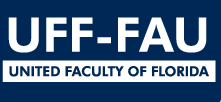May 22, 2010. Most of the state’s public universities subsidize athletics with mandatory fees that have increased dramatically over the past ten years.
(May 20, 2010)
By Scott Travis, Sun Sentinel
Students at the University of Florida pay about $46 a year to support the powerhouse Gator athletic program, a bargain price that hasn’t changed in a decade.
At schools with less established sports programs, such as Florida International University and Florida Atlantic University, students must pay more than $340 a year, even though the games struggle to attract student interest.
Students say it isn’t fair — especially now, with a recession making it harder to get student loans, cuts in Bright Futures scholarships and 15 percent increases in tuition.
“I don’t see why [FIU] students have to pay double, triple, or quadruple what UF students are paying,” said Diana Jordan, an FIU graduate student from Miami.
The reason: The state doesn’t allow taxpayer money to go toward sports programs, so schools with fewer alumni and donors rely more heavily on mandatory athletic fees.
In Florida, each university decides how big to build its sports program. Hoping to duplicate the success of the Florida Gators and the Florida State University Seminoles, the younger programs have spent millions creating football teams, building stadiums and moving into the NCAA’s top division.
But UF and FSU are the only two of the state’s 10 public universities with NCAA sports programs that make money. The eight others subsidize their programs, mostly through athletic fees, which have climbed steeply during the past decade. For example, full-time students taking 12 credit hours at FIU paid about $200 a year in student fees in fall 2000. Now they pay $368. At FAU, athletic fees have increased from $210 in 2000 to $343.
UF’s athletic fees are the lowest of any public university with an NCAA program. FSU is second, with full-time students paying about $141. FSU’s fee includes free student tickets to home football games, while UF students have to pay for them. Both schools generate enough revenue to donate money back to their schools’ academic programs.
At schools that rely more heavily on student athletic fees, officials defend the sports programs as bringing needed visibility to campuses. They say that can attract students and donors and bring alumni back to campus, even if that’s been slow to happen in the early years.
The money-losing nature of college sports has prompted big changes at some colleges around the country. Some have dropped football. Birmingham-Southern College and the University of New Orleans left Division I in recent years, moving to the less expensive Division III.
